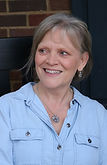Teach Them Love
- Susan Koehler
- May 31, 2020
- 2 min read
“I’m her!” My daughters shouted those words so frequently in childhood when we read picture books together. This tendency to identify with a fictional character is instinctual and universal. It’s how children begin to see a world beyond their own experience.
For my children, the characters illustrated in their picture books generally reflected their own skin tone, hair, and facial features. However, that’s a problem. Children with skin tone, hair, and facial features different from those in popular picture books could not identify as easily. The world of picture books set a norm that sent a hidden message to those children: You are different.
This message sneaks itself into our consciousness and does something even more damaging than depriving People of Color the opportunity to see themselves in literature. This establishment of a norm sends a hidden message to children who are able to see themselves in the vast majority of children’s books. And that message is: They are different.
According to weneeddiversebooks.org, a 1965 study published in The Saturday Review revealed that only about 6.7% of children’s books contained one or more African-American characters, and by 2013, the margin had grown only minimally, to 10%. This is a problem not only because all children seek and deserve to see themselves represented in books, but also because all children need to identify with each other instead of learning to identify some children as the other.
If we are to break down the barriers that divide humanity by race, we must begin to connect on a level much deeper than skin color. And I believe the best place to start is with children. Instead of having to unlearn boundaries and stereotypes, maybe they can avoid forming them in the first place.
My friend Roslyn, distressed with our current state of racial division and inequity, issued a challenge. Roslyn’s birthday is in June, and her birthday wish is that her friends commit to battling racism and its rippling effects of discontent and injustice. And so, for the month of June, I will be using my author platform to promote books that embrace racial diversity.
Some are written by diverse authors; others are not. Some are universal stories with a main character who happens to be African-American, and others are stories that offer the reader powerful vicarious experiences through the eyes of marginalized characters. Some are picture books, some are early chapter books, and some are middle grade fiction. All are books that I have seen children enjoy during my 35 years of teaching and sharing literature.
Through identification with fictional characters, children explore their own identities and shape the internal lens through which they view this world and its inhabitants. Let’s use literature to sow the seeds for a more inclusive tomorrow. Let’s teach children acceptance. Let’s teach children empathy. Let’s teach them love.















Comments